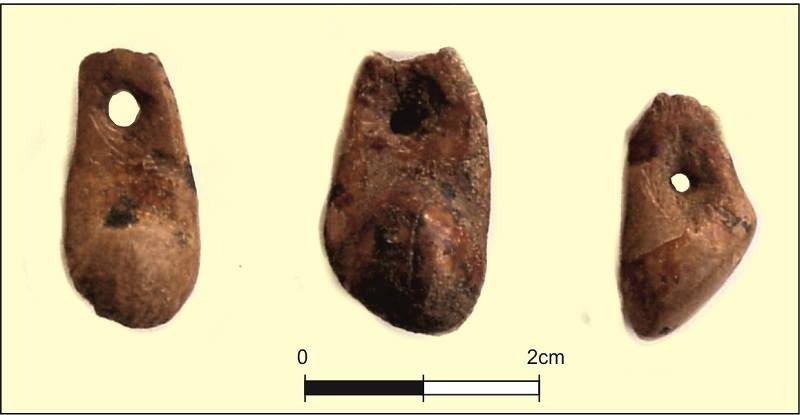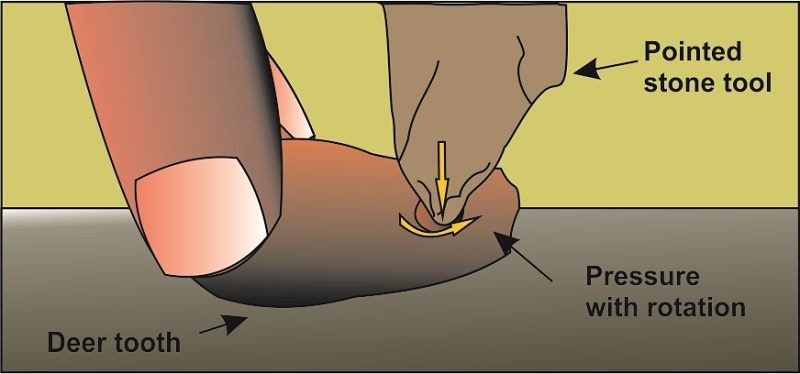perforated deer teeth


Perforated deer teeth
Within the assemblage of artefacts from the Upper Palaeolithic (modern humans around 20 thousand years ago) of Gorham’s Cave, a set of perforated animal teeth and sea shells, associated with the Solutrean culture, stands out. The image shows three Red Deer (Cervus elaphus) canines with perforations for use as pendant or in a necklace.
The use of this kind of pendant decoration made from different materials, is widespread in the Upper Palaeolithic but there is also evidence for a need for ornamentation as early as the Neanderthal period (Middle Palaeolithic) or in the African Middle Stone Age. It is during the Solutrean period when this phenomenon really develops, and within the Iberian Peninsula it is in the Mediterranean areas where it stands out in terms of the number of finds.
By analysing the cut marks around the perforations and with the aid of experimental archaeology, it has been possible to identify the different perforation methods employed. In this case we find that the teeth were perforated on just one side and on the root end. Pressure would have been applied with a pointed stone tool with a rotational movement to drill into the teeth and achieve the necessary holes to hang them as pendants.
Published: March 28, 2020
Other similar VM - Archaeology
18-20 Bomb House Lane
PO Box 939,
Gibraltar
